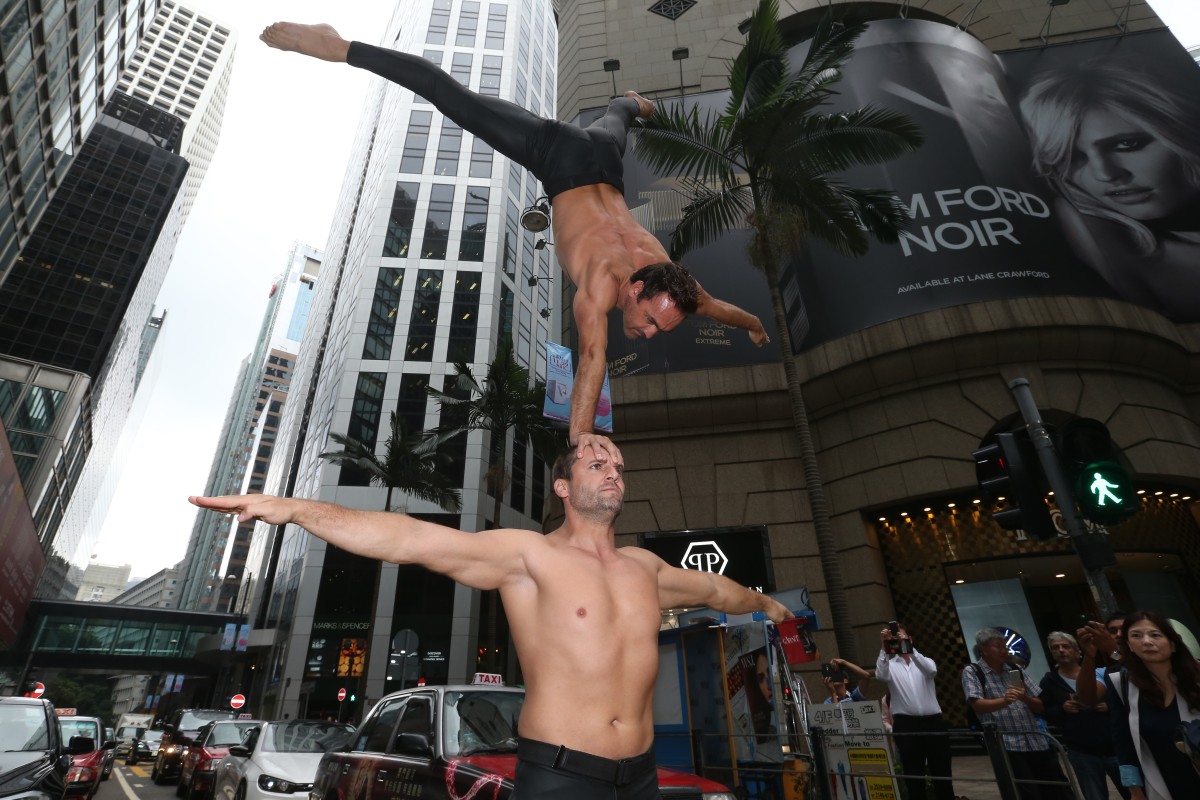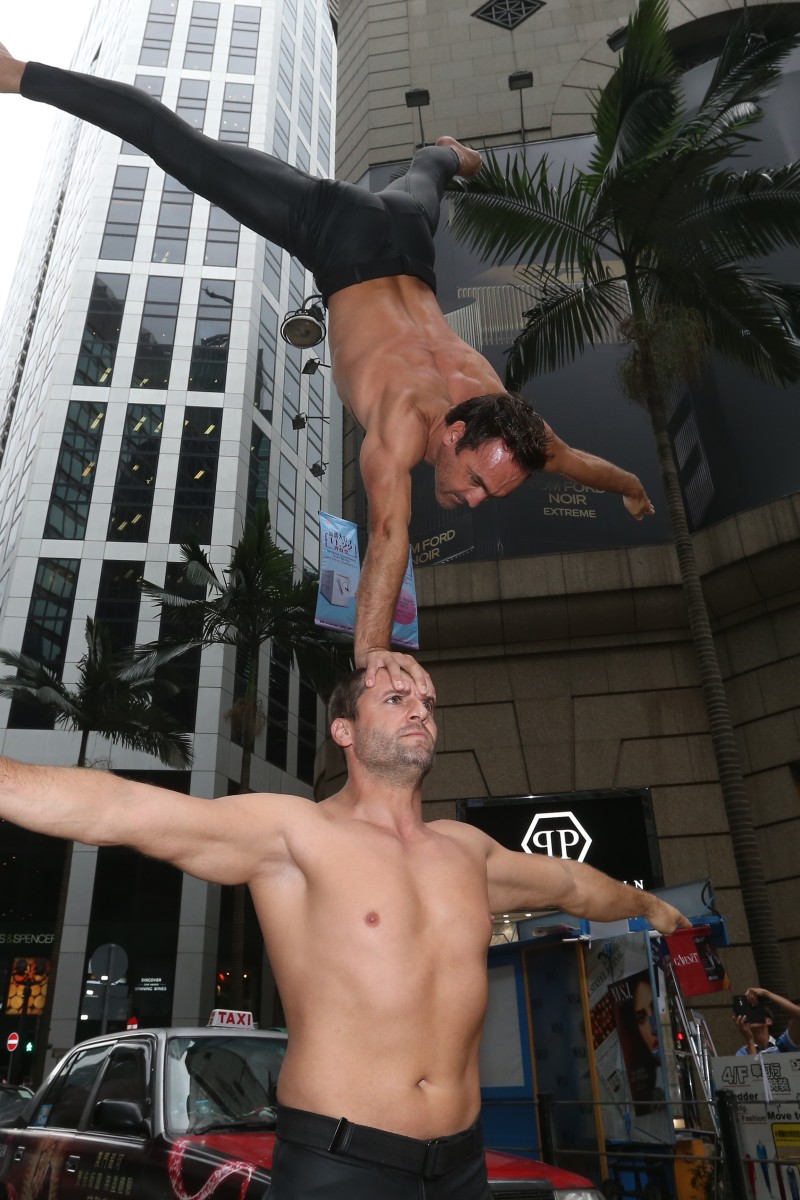 Mark Flores (top) and Nikolay Nikolov stopped traffic in Central.
Mark Flores (top) and Nikolay Nikolov stopped traffic in Central.A rare sight in Central literally stopped traffic, as well as stopping the hordes of lunch-seekers in their tracks: a shirtless, muscular man doing a one-arm handstand on the head of another shirtless, even more muscular man, who was calmly crossing the road while people snapped photos.
Meet Mark Flores and Nikolay Nikolov, the "heavyweights" who will perform alongside other Cirque Adrenaline stars in Hong Kong from December 22 to January 3.
It's easy to see why the street performance was a piece of cake for the two gymnasts. For their act in the show, Nikolov climbs a 15-metre ladder with the 66-kg Flores balanced on his head. They do not use any kind of safety, so a single slip could result in fatal injuries.
"Having wires restricts the stunts we do," says Flores, 37. "Not having wires pushes you to train harder. It gives that extra wow," adds Nikolov, 38. "It's also just pride, you know?"
The pair's confidence is firmly rooted in a mutual trust built over a 10-year period. But before they performed together, they were rivals in acrobatics competitions.
Having started sports acrobatics at the age of seven, Nikolov attended a sports school and practised for seven hours a day. He is a 10-time Bulgarian champion, and led the Bulgarian National Team for more than 10 years, winning many medals in European and world championships. But he wasn't able to beat Flores, who scored a perfect 10 in them men's pair for Britain and won the Senior World Championships in 1998. "I always joke with Mark that he beat me, but now his life depends on me," laughs Nikolov.
Flores, who grew up attending a regular school and trained alone during lunchtime, says he's determined to be the best.
"Nikolay and I are the worst people to play games with, because we're so aggressive. We always want to win," he says.
"Yeah, even when I play chess with my 13-year-old son, I can't let him win, even when my wife tells me to," adds Nikolov.
Occasionally, the duo suffer muscle injuries after intense practice, but life is even tougher for Cirque Adrenaline's motocross athletes. Martin Koren, manager of the freestyle motocross act and a rider himself, has had 16 operations. He's suffered broken bones and tendons; in 2007, he broke three bones in his back.
"Injuries come with the sport," he says casually. "But it's your dream. You keep chasing the adrenaline, the feeling, and the thousands of people that cheer you in the arena."
Freestyle motocross is one of the fastest-growing categories of motosports, where athletes try to imitate BMX stunts on motorbikes weighing up to 100kg.
In Cirque Adrenaline, the five freestyle motocross athletes will ride out from a tunnel, do 12m-high leaps, perform tricks while they are airborne, and land in another tunnel 21m away. Two of the riders will perform backflips, one of the toughest tricks. It's a true leap of faith, says Koren.
"A steep ramp leads out of the tunnel. So you basically can't see anything out there," he says. "You need to be really focused. Any slip of the mind and you will pay the price."
Koren says there aren't established training routines for freestyle motocross, which is a relatively new sport. Explosive power and flexibility are more important than strength, because athletes only have 2.5 seconds to pull off their stunts.
Koren says it's helpful to copy the same training methods used by professional fighters to build flexibility and focus.
The motorbikes also need modifications, including cutting holes in the back of the seat for athletes to cling on to mid-air.
For anyone hoping to wow the crowds with flips, Koren, who had 16 years of riding experience before attempting freestyle motocross, advises baby steps. He suggests starting with motocross racing to get comfortable with shifting and jumping. "It's a huge step into freestyle motosports. Today there are still only about 250 professional athletes in the whole world."
